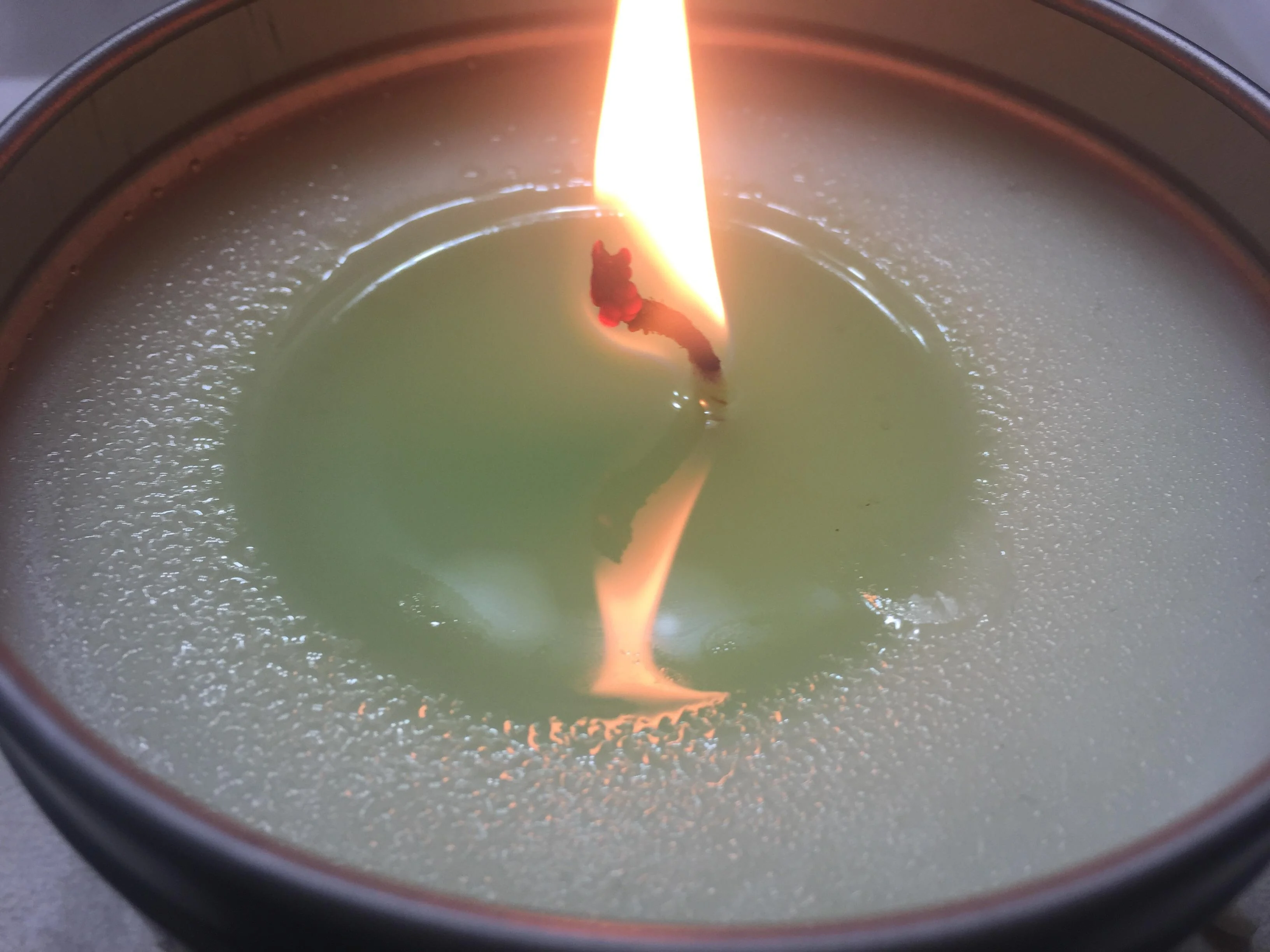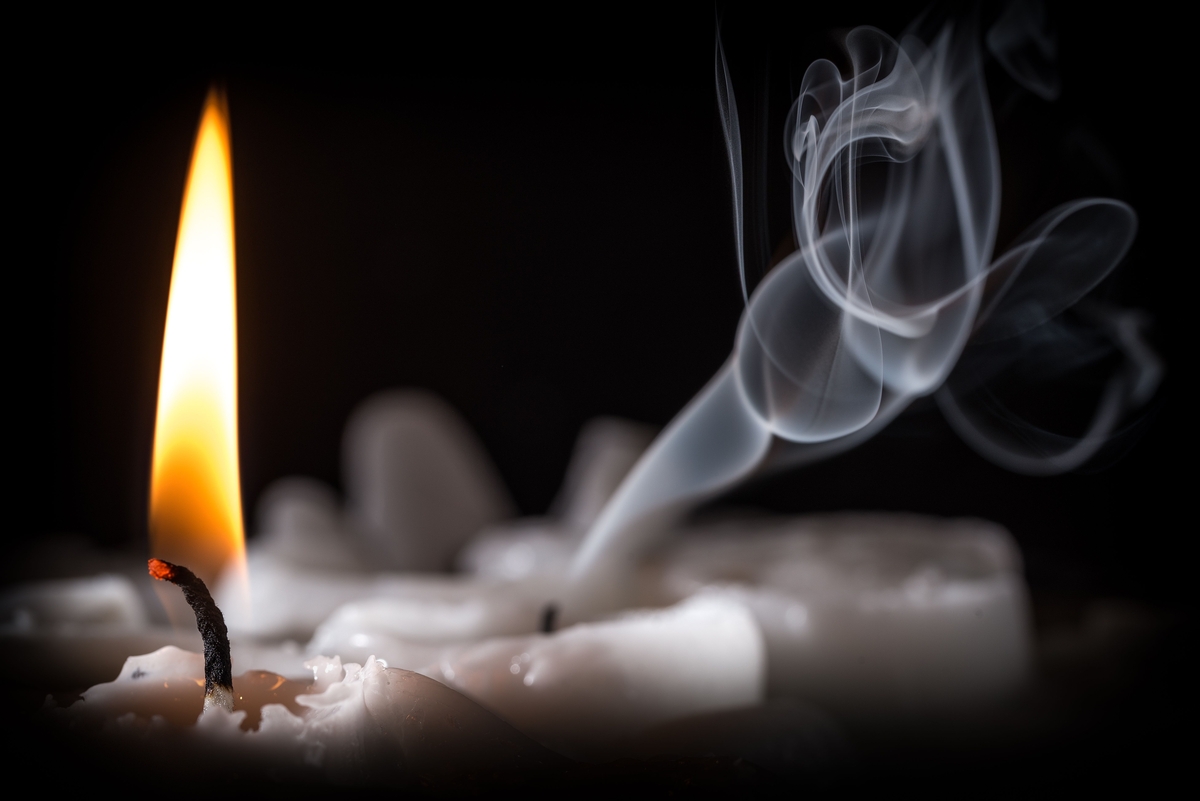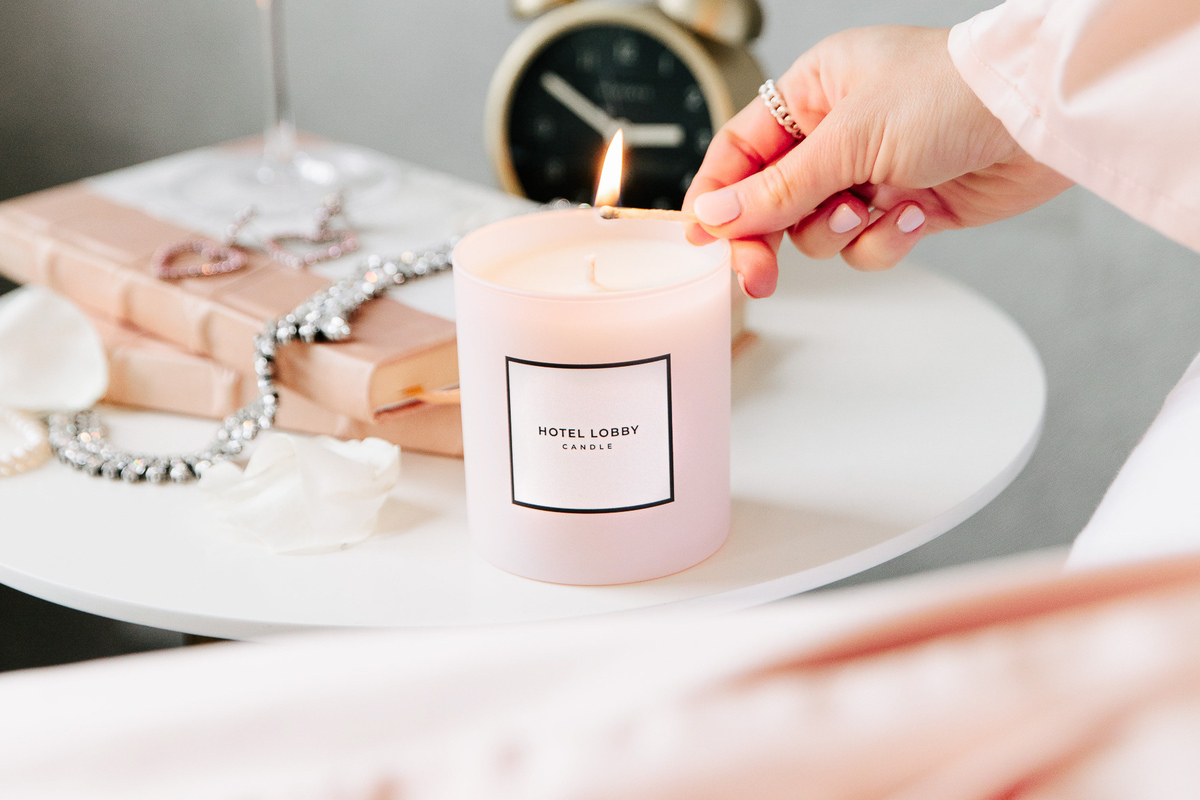

Articles
Why Do Candles Sweat
Modified: February 25, 2024
"Discover the science behind why candles sometimes sweat in this collection of informative and fascinating articles. Uncover the reasons and solutions to this common candle phenomenon."
(Many of the links in this article redirect to a specific reviewed product. Your purchase of these products through affiliate links helps to generate commission for Storables.com, at no extra cost. Learn more)
Introduction
Have you ever noticed beads of moisture forming on the surface of your candles? This phenomenon, commonly known as candle sweating, can leave you wondering what is causing it and if it is something to be concerned about. In this article, we will delve into the reasons behind candle sweating, the potential risks involved, and how you can prevent it from happening.
When you light a candle, you expect it to create a warm and inviting ambiance in your home. However, if you find your candles sweating, it can diminish their aesthetic appeal and even lead to potential hazards. Understanding why candles sweat and taking the necessary precautions can help you enjoy a safer and more satisfactory candle-burning experience.
Join us as we explore the causes of candle sweating, its effects, and the measures you can take to prevent it. Whether you are a candle enthusiast or simply enjoy the warm glow they provide, this article will provide you with valuable insights on how to ensure your candles remain sweat-free.
Key Takeaways:
- Understanding the causes of candle sweating, such as humidity and poor quality wax, can help prevent this frustrating phenomenon and ensure a more enjoyable and visually appealing candle-burning experience.
- By implementing proper usage and storage practices, selecting high-quality candles, and being mindful of factors like wick size and fragrance options, you can minimize or eliminate candle sweating, creating a safer and more satisfying ambiance in your home.
Read more: Why Do Candles Pop?
What is candle sweating?
Candle sweating refers to the phenomenon where candles develop droplets or beads of moisture on their surface. These droplets can appear as tiny water droplets or even as a thin layer of liquid covering the candle. If you’ve ever noticed this happening to your candles, you may have wondered what causes it and if it is a sign of a faulty or low-quality candle.
In reality, candle sweating is a natural occurrence caused by the combination of several factors. It is important to note that it is not necessarily indicative of a defect in the candle itself, but rather the conditions in which the candle is placed and burned.
The moisture on the surface of the candle is a result of the cooling and condensation of the candle’s wax. As the candle burns, the heat from the flame melts the wax, turning it into a liquid. However, as the liquid wax cools down, it can mix with the surrounding air, which often contains moisture. This cooling process causes the moisture to condense and form droplets on the candle’s surface.
Candle sweating is more likely to occur in environments with higher humidity levels. Humidity refers to the amount of moisture present in the air, and when it is high, the air is already saturated with water vapor. As the melted wax comes into contact with this moisture-laden air, it cools down faster, resulting in increased condensation and candle sweating.
It is important to note that while candle sweating is a common occurrence, excessive sweating may indicate underlying issues with the candle or its surroundings. Now that we have a better understanding of what causes candle sweating, let’s explore some of the factors that contribute to it in more detail.
Causes of candle sweating
Candle sweating can be attributed to various factors, including humidity and temperature, poor quality wax, incorrect wick size, and improper storage. Understanding these causes can help you take the necessary steps to prevent or minimize candle sweating.
Humidity and temperature
One of the primary causes of candle sweating is the humidity level in the environment. When the air is already saturated with moisture, the wax is more likely to cool and condense quickly, resulting in sweating candles. Similarly, extreme temperature changes can also contribute to sweating. Rapid changes in temperature can cause the wax to contract and expand, leading to the formation of droplets on the candle’s surface.
Poor quality wax
The quality of the wax used in candles plays a significant role in whether or not they will sweat. Lower-quality wax, such as those with impurities or additives, tends to be more prone to sweating. These impurities can affect the candle’s ability to burn evenly, leading to uneven wax melting and increased sweating.
Read more: Why Do Candles Flicker
Incorrect wick size
Using the wrong size wick for a particular candle can contribute to sweating. A wick that is too large will produce too much heat, causing the wax to melt rapidly and potentially lead to sweating. On the other hand, a wick that is too small may not melt the wax evenly, resulting in uneven burning and sweating.
Improper storage
The way candles are stored can also influence their tendency to sweat. Storing candles in a humid environment, such as a bathroom or basement, can increase the likelihood of sweating. Similarly, exposing candles to direct sunlight or fluctuating temperatures can also impact their performance.
By understanding these causes, you can take proactive measures to prevent or minimize candle sweating. In the next section, we will explore the effects of candle sweating and the potential risks associated with it.
Humidity and temperature
Humidity and temperature are significant factors when it comes to candle sweating. The amount of moisture in the air, known as humidity, and the surrounding temperature can both impact the rate at which a candle sweats.
Humidity refers to the level of water vapor present in the air. When the air is saturated with moisture, it becomes more difficult for the melted wax on a candle’s surface to evaporate. As a result, the wax cools and condenses, forming droplets or beads of moisture, leading to candle sweating.
High humidity levels can accelerate the sweating process, especially if the airflow around the candle is limited. In environments with high humidity, such as bathrooms or basements, candles are more prone to sweating. This is because the moisture in the air readily comes into contact with the melted wax, causing it to cool and form droplets.
Temperature fluctuations can also contribute to candle sweating. When a candle is exposed to rapid changes in temperature, the wax can contract and expand. This contraction and expansion can create cracks in the surface of the candle, allowing moisture to seep into it. As the candle cools down, the moisture condenses, resulting in sweating.
Extreme temperatures can also affect the rate at which a candle sweats. For example, placing a candle in a hot and humid environment can cause the wax to melt more rapidly. When the wax melts faster than it can evaporate, it increases the chances of sweating. On the other hand, placing a candle in a cold environment can cause the wax to cool and solidify quickly, contributing to sweating as well.
To minimize the impact of humidity and temperature on candle sweating, it’s important to consider the environment in which you burn your candles. Avoid placing candles in areas with high humidity, such as near open windows, in the bathroom, or in damp basements. Additionally, try to maintain a stable and moderate room temperature to minimize temperature fluctuations that can lead to sweating.
By managing the humidity and temperature in your candle-burning environment, you can reduce the likelihood of candle sweating and enjoy the full beauty and functionality of your candles.
Poor quality wax
The quality of the wax used in candles can have a significant impact on whether or not they sweat. Poor quality wax, which may contain impurities or additives, is more prone to sweating compared to high-quality wax.
Impurities in wax, such as leftover debris from the manufacturing process or other contaminants, can affect the way a candle burns. These impurities can disrupt the uniform melting process of the wax, leading to uneven heat distribution and potential sweating. Additionally, impurities can interfere with the scent throw and overall performance of the candle.
Additives, such as colorants or fragrance oils, can also contribute to candle sweating. While these additives are commonly used to enhance the appearance and scent of candles, they can introduce additional components that affect the wax’s behavior when burned. Some additives may increase the wax’s propensity to sweat, leading to beads of moisture forming on the surface.
Choosing candles made from high-quality wax, such as soy wax or beeswax, can help minimize the likelihood of sweating. These types of wax typically undergo more rigorous processing and purification techniques, resulting in a cleaner and more stable burning experience. High-quality wax is less likely to contain impurities or additives that can contribute to sweating.
When purchasing candles, it is essential to look for reputable brands or manufacturers that prioritize using high-quality wax. Reading customer reviews and seeking recommendations can help ensure that you are investing in candles that are less likely to sweat and offer a better overall burning experience.
Furthermore, proper candle care and maintenance can play a role in preventing sweating due to poor quality wax. Trimming the wick before each use, avoiding drafty areas, and burning candles for a sufficient amount of time can help promote an even and controlled burn, minimizing potential sweating.
By being mindful of the wax quality and selecting candles made from high-quality ingredients, you can significantly reduce the occurrence of candle sweating and enjoy a more satisfying and visually appealing candle-burning experience.
Read more: Why Is My Toilet Tank Sweating
Incorrect wick size
The size of the wick used in a candle can also impact its tendency to sweat. Using an incorrect wick size, whether it is too large or too small, can lead to an uneven burn and increased sweating.
When a wick is too large for a candle, it produces more heat, melting the wax at a faster rate. This excessive heat can cause the wax to melt unevenly and pool around the wick, increasing the likelihood of sweating. The larger flame generated by an oversized wick can also create more soot, which can further contribute to sweating and discoloration of the candle’s surface.
On the other hand, using a wick that is too small for a candle can result in incomplete melting of the wax. This inadequate heat can cause the wax to cool and solidify before the entire surface area of the candle has melted. As a consequence, the trapped liquid wax can lead to sweating when the candle is relit, as the remaining wax attempts to catch up with the burnt area.
It is crucial to choose the appropriate wick size for the specific candle you are using. Manufacturers often provide guidelines or recommendations regarding wick sizes for their candles based on factors such as the diameter of the candle and the type of wax used. Following these recommendations can help promote an even burn and reduce the likelihood of sweating.
Experimentation may be necessary when selecting the correct wick size, especially if you are making your own candles or using candles from different sources. Conducting test burns with various wick sizes can help you determine the most suitable option for achieving a clean and even burn without excessive sweating.
Proper wick maintenance is also essential in minimizing sweating due to incorrect wick sizing. Trimming the wick to the appropriate length before each use can help control the flame size and prevent an oversized wick from generating excessive heat. Regularly monitoring the burn performance of your candles can help identify whether the wick size needs adjustment.
By using the correct wick size and practicing proper wick care, you can minimize the occurrence of sweating and enhance the overall performance and appearance of your candles.
Improper storage
The way candles are stored can also have an impact on their tendency to sweat. Improper storage conditions can exacerbate sweating and affect the overall quality and performance of the candles.
One of the key factors in proper candle storage is humidity. Storing candles in a humid environment, such as a bathroom or a basement, can increase the likelihood of sweating. The moisture in the air readily comes into contact with the candle’s surface, causing the wax to cool and condense, resulting in sweating. Therefore, it is important to choose a suitable location for candle storage that is relatively dry and well-ventilated.
Direct exposure to sunlight can also affect candle sweating. Ultraviolet (UV) rays from the sun can cause the wax to soften and melt, increasing the likelihood of sweating. It is advisable to store candles away from direct sunlight or use protective covers, such as opaque containers or covers, to shield them from UV rays.
Fluctuating temperatures can also impact the quality and appearance of candles. Rapid changes in temperature can cause the wax to contract and expand, leading to cracks in the surface and potential moisture penetration. It is best to store candles in a cool and consistent temperature environment to maintain their integrity.
In addition to considering the storage environment, the way you store your candles can also affect their tendency to sweat. Stacking or tightly packing candles can exert pressure on the wax, potentially causing the sweat to accumulate and affect their appearance. It is recommended to store candles in an upright position, either individually or with minimal contact between them, to allow for proper air circulation.
Furthermore, storing candles for an extended period without adequate protection can result in dust or debris settling on the surface. This can lead to a compromised burn and increased sweating. Using appropriate covers or protective containers can help keep candles clean and free from external contaminants.
By storing candles in a dry and well-ventilated area, protecting them from sunlight, maintaining stable temperatures, and avoiding tight packing, you can help prevent or minimize candle sweating. Proper storage not only preserves the quality and appearance of your candles but also ensures a more enjoyable and long-lasting burning experience.
Effects of candle sweating
Candle sweating can have various effects on both the visual appeal and safety of a candle. Understanding these effects is crucial for maintaining the integrity and enjoyment of your candles.
Visual appearance
The most noticeable effect of candle sweating is its impact on the visual appearance of the candle. When a candle sweats, it can develop unsightly droplets or beads of moisture on its surface. These droplets can make the candle look unattractive or messy, diminishing its aesthetic appeal. Sweating can also cause the color or design of the candle to become distorted, affecting its overall visual appeal.
Read more: Why Do My Candles Crack
Burning issues
Additionally, candle sweating can lead to burning issues. The presence of excess moisture on the surface of the candle can interfere with the quality of the burn. The moisture can affect the flame’s ability to properly burn the wax, causing an uneven and unpredictable burn pattern. This can result in a shorter burn time and an inefficient use of the candle’s wax, reducing its overall lifespan.
Dripping and soot
Candle sweating can also contribute to dripping and soot formation. When the melted wax mixes with the moisture on the surface of the candle, it can create a liquid layer that drips down the sides of the candle as it burns. This dripping not only affects the cleanliness of the candle and surrounding area but can also pose a fire hazard if the hot wax drips onto flammable surfaces.
In addition, sweating can increase the production of soot, the black residue that may accumulate on candle jars, walls, or other surfaces. Excess soot can be problematic, as it can stain surfaces and may contribute to reduced indoor air quality when inhaled.
Fire hazards
While not a direct effect of candle sweating, it is worth mentioning that excessive sweating or improper handling of candles can increase the risk of fire hazards. If too much liquid wax accumulates on the candle’s surface, it can overflow or spill onto nearby objects when the candle is lit. This can result in the ignition of flammable materials and potentially lead to a fire.
It is crucial to be mindful of the effects of candle sweating and take appropriate measures to prevent or minimize it. In the next section, we will explore ways to prevent candle sweating and create a safer and enjoyable candle-burning experience.
Dangers and risks
While candle sweating itself may not pose direct dangers, there are accompanying risks that should be considered. Understanding these risks can help you take proactive measures to mitigate potential hazards.
Read more: Why Do We Light Candles On Shabbat
Fire hazard
If excessive sweating occurs and the liquid wax spills or drips onto flammable materials, it can pose a fire hazard. The heat of the candle’s flame can ignite the spilled wax or nearby objects, leading to a potentially dangerous situation. It is crucial to always exercise caution when using candles and ensure they are placed on heat-resistant surfaces away from flammable items.
Smoke and soot inhalation
When a candle sweats excessively or burns improperly due to moisture, it can produce more smoke and soot. Inhaling smoke and soot particles can irritate the respiratory system and may pose health risks, especially for individuals with respiratory conditions or sensitivities. It is important to keep candle-burning areas well-ventilated and be mindful of any signs of excessive smoke or soot production.
Allergens and irritants
Certain candles, particularly those with added fragrances or synthetic materials, can release allergens or irritants into the air. Sweating candles may increase the release of these substances, leading to potential allergic reactions or respiratory irritations. It is advisable to use candles made from natural ingredients and to choose fragrance-free options if you are sensitive to scents or prone to allergies.
Children and pet safety
Candles that sweat excessively and pose fire hazards can be particularly dangerous when there are children or pets present. Curious children or active pets can accidentally knock over a candle, potentially leading to burns or fires. It is important to keep candles out of reach of children and to never leave them unattended, especially in the presence of pets.
By being aware of these dangers and risks associated with candle sweating, you can take appropriate precautions to minimize potential hazards. In the next section, we will discuss preventive measures that can help reduce or prevent candle sweating, promoting a safer and more enjoyable candle-burning experience.
Read more: Why Does Kegerator Sweat On Bottom
Preventing candle sweating
To prevent or minimize candle sweating, there are several measures you can take, including proper usage and storage as well as selecting high-quality candles. By following these preventive steps, you can enhance the longevity and performance of your candles.
Proper usage and storage
One of the key factors in preventing candle sweating is using candles in appropriate conditions and maintaining proper storage practices.
Firstly, avoid placing candles in areas with high humidity, such as bathrooms or basements. High humidity levels can contribute to increased sweating. Instead, choose a drier and well-ventilated area for burning your candles.
It is also important to keep candles away from direct sunlight, as UV rays can soften the wax and lead to sweating. Find a location in your home where candles are shielded from direct sunlight or use protective covers, such as curtains or blinds, to minimize exposure to UV rays.
In addition, ensure that candles are stored in a cool and consistent temperature environment. Avoid placing them near heat sources or in areas that experience rapid temperature changes, as this can cause the wax to contract and expand, increasing the likelihood of sweating.
When burning candles, ensure they are placed on a heat-resistant surface away from any flammable materials. This reduces the risk of spills, accidental fires, and excessive sweating due to direct contact with nearby objects.
Choosing high-quality candles
Selecting high-quality candles is another effective way to prevent candle sweating. Look for candles made from natural waxes, such as soy wax or beeswax, which are known to have better burning properties and are less prone to sweating compared to lower-quality or blended waxes.
Reputable candle brands prioritize the use of high-quality ingredients and follow strict manufacturing processes, resulting in candles that are less likely to sweat. Read customer reviews and seek recommendations to ensure you are purchasing candles from trustworthy sources.
Trimming the wick to the appropriate length before each use can also help promote an even burn and reduce the chances of sweating. A properly trimmed wick leads to a controlled flame size and prevents excessive heat generation, which can contribute to sweating.
Candle care and maintenance
To prevent sweating, it is essential to practice good candle care and maintenance. Trim the wick to about ¼ inch before lighting to promote an even burn and minimize the production of soot. This simple step can make a significant difference in the performance of your candles.
Allow candles to burn for a sufficient amount of time to ensure that the entire surface of the candle melts evenly. This helps prevent the buildup of excess liquid wax that can lead to sweating when the candle is relit.
Keep the area around the candle clean and free from debris. Dust or other particles can impact the burn and increase the chances of sweating. Gently wipe the candle’s surface if necessary.
By following these preventive measures, you can minimize or even eliminate candle sweating, ensuring a safer and more enjoyable candle-burning experience. Remember to always exercise caution and never leave candles unattended.
Read more: Why Do Luminara Candles Stop Working
Proper usage and storage
Proper usage and storage of candles play a crucial role in maintaining their quality and reducing the likelihood of sweating. By following these guidelines, you can ensure a safer and more enjoyable candle-burning experience.
Selecting the right location
When deciding where to place your candles, it is important to consider the surrounding environment. Avoid placing candles in areas with high humidity, such as bathrooms or basements, as the excess moisture in the air can increase the chances of sweating. Instead, choose a drier and well-ventilated space for burning your candles.
It is also essential to keep candles away from direct sunlight. Exposure to sunlight can cause the wax to soften and melt, leading to increased sweating. Find a location in your home where candles are shielded from direct sunlight or use curtains or blinds to block the UV rays.
In addition, consider the temperature of the area where your candles are placed. Avoid areas with fluctuating temperatures or heat sources, as the wax can contract and expand, resulting in sweating. Storing candles in a cool and consistent temperature environment helps maintain their integrity and minimizes sweating.
Using appropriate holders
Always use a proper candle holder or container when burning candles. This helps protect the surface they are placed on from heat damage and prevents potential spills that can contribute to sweating. Ensure that the holder is heat-resistant and stable, providing a secure base for the candle.
Keep away from flammable materials
When burning candles, it is crucial to keep them away from flammable materials. Ensure they are placed on a heat-resistant surface, away from curtains, upholstery, and other easily ignitable items. This helps reduce the risk of accidental fires and prevents excessive sweating due to contact with nearby objects.
Never leave unattended
It is important to never leave a burning candle unattended. Always extinguish candles before leaving the room or going to sleep. This helps prevent any potential accidents, such as tipped candles or excessive sweating leading to spills. Remember, safety should always be a top priority.
Trimming the wick
Before lighting a candle, trim the wick to approximately ¼ inch in length. This helps promote an even burn and reduces the chances of excessive heat generation, which can contribute to sweating. Regularly trimming the wick also prevents the formation of excessive soot and ensures a cleaner burn.
Safe extinguishing
When extinguishing a candle, use a candle snuffer or gently blow it out. This helps prevent any wax splattering or smoking, which can lead to sweating. Avoid blowing out candles with force, as this can cause hot wax to scatter and increase the risk of burns or fire hazards.
By following these proper usage and storage guidelines, you can maintain the quality of your candles, minimize sweating, and create a safe environment for enjoying their warm and cozy glow.
Choosing high-quality candles
When it comes to preventing candle sweating, selecting high-quality candles is of utmost importance. High-quality candles are less likely to sweat and offer a more satisfying and visually appealing burning experience. Here are some tips to help you choose the best candles:
Read more: Why Do We Light Candles For The Dead
Quality of wax
Consider the type of wax used in the candles you are considering. Opt for candles made from natural waxes, such as soy wax, beeswax, or coconut wax. These natural waxes are known for their clean-burning properties and ability to hold fragrances effectively. They are less prone to sweating compared to lower-quality waxes or blends.
Look for candles made from 100% natural waxes, without the addition of paraffin or other petroleum-based additives. Natural waxes not only emit less soot but also burn more evenly, reducing the chances of sweating and providing a longer burn time.
Reputable brands
Choose candles from reputable and well-established brands. Reputable candle companies prioritize using high-quality ingredients and follow strict manufacturing processes to ensure a superior product. Research and read customer reviews to determine which brands have a track record of producing high-quality, sweat-resistant candles.
Buying from reputable brands also ensures that proper care and attention have been given to sourcing ingredients, testing fragrances, and creating candles that perform well without excessive sweating.
Reviews and recommendations
Take the time to read customer reviews and seek recommendations from family, friends, or online candle communities. Customer reviews can provide valuable insights into the performance, quality, and sweating tendencies of different candle brands. Look for consistent positive feedback regarding sweat resistance when considering purchasing a specific brand or product.
By seeking recommendations, you can tap into the experiences of others who have already tested various candle brands and can guide you towards sweat-resistant options.
Fragrance options
If you prefer scented candles, consider the fragrance options available. High-quality candles often use premium fragrance oils that are specifically designed to blend well with the wax and emit a pleasant scent. These fragrances are less likely to interfere with the candle’s burn performance or contribute to excessive sweating.
Opt for candles with natural, essential oil-based fragrances rather than those with synthetic fragrance oils. Natural fragrances are generally less likely to cause irritation or trigger allergies, making them a more enjoyable and safe choice.
Read more: Why Do People Light Candles In Church
Testing and experimenting
Don’t be afraid to experiment and test different candle brands to find the ones that suit your preferences. Purchase smaller sizes or sample packs to try out candles before committing to larger quantities. This way, you can assess their burning performance, sweat resistance, and overall satisfaction before making a significant investment.
By considering the quality of wax, sticking to reputable brands, reading reviews, and experimenting with different options, you can choose high-quality candles that are less likely to sweat and offer superior performance and aesthetics.
Conclusion
Candle sweating can be a frustrating issue for candle enthusiasts, but understanding its causes and taking preventive measures can help minimize this phenomenon. By implementing proper usage and storage techniques, selecting high-quality candles, and being mindful of factors such as humidity, temperature, and wick size, you can significantly reduce or even eliminate candle sweating.
Humidity and temperature play a significant role in candle sweating, with high humidity levels and extreme temperature changes increasing the chances of droplets forming on the candle’s surface. By choosing a suitable location for burning candles, avoiding direct sunlight, and maintaining stable room temperatures, you can create a more favorable environment for candles to burn without excessive sweating.
Poor quality wax, impurities, and additives can also contribute to candle sweating. Opting for candles made from high-quality, natural wax and avoiding those with synthetic additives or impurities can help reduce sweating and improve the overall burn performance.
The size of the wick used in candles is another factor to consider. Using the correct wick size ensures an even and controlled burn, minimizing sweating caused by an oversized or undersized wick. Trimming the wick before each use also promotes a clean and efficient burn with reduced sweating.
Proper usage and storage are essential in preventing candle sweating. Choosing the right location, using appropriate holders, keeping candles away from flammable materials, and never leaving them unattended are crucial safety measures. Following these guidelines ensures not only a reduced risk of sweating but also a safer candle-burning experience.
Choosing high-quality candles from reputable brands, considering the quality of wax and fragrance options, and seeking recommendations can further minimize the chances of sweating. By conducting thorough research and testing different brands, you can select candles that are less likely to sweat and provide a more enjoyable and visually appealing burn.
In conclusion, with proper care, attention, and an understanding of the causes of candle sweating, you can create a sweat-free candle-burning experience. By implementing the preventive measures outlined in this article, you can enjoy the cozy atmosphere and captivating glow of candles without the frustration of sweating. Remember, a little extra care and attention will go a long way in ensuring the beauty and longevity of your candles while providing a safe and delightful ambiance in your home.
Frequently Asked Questions about Why Do Candles Sweat
Was this page helpful?
At Storables.com, we guarantee accurate and reliable information. Our content, validated by Expert Board Contributors, is crafted following stringent Editorial Policies. We're committed to providing you with well-researched, expert-backed insights for all your informational needs.







0 thoughts on “Why Do Candles Sweat”